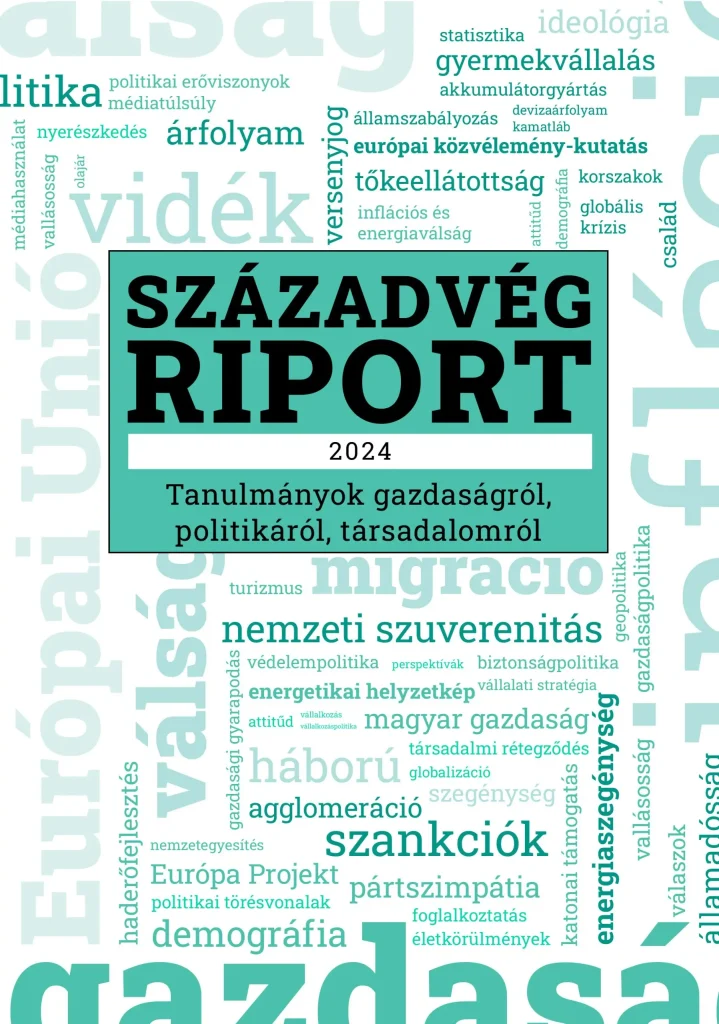The prosperity index remained in negative territory, determined by the uncertainty generated by the prolonged Russia-Ukraine war and the economic sanctions. Significant improvement in economic expectations is likely to occur if the war ends, inflation remains in the central bank’s target range (between 2% and 4%), the interest rate environment becomes more favourable, the European economy strengthens, and energy markets sustain low prices.
Of the four sub-indices of the household prosperity index, one was stagnant, while three weakened slightly in May 2025 compared with the previous month. Employment continued to be the most positively assessed, with a deterioration from -2.4 in the previous month to -2.8. In May, perceptions of the economic environment did not change from -30.7 in the previous month, while the inflation perception sub-index fell from -72.1 to -73.1 and the sub-index measuring the perception of one’s financial situation weakened from -11.2 to -11.3.
The May 2025 household prosperity survey found a marked positive shift in households’ savings expectations from April.
In May, respondents gave a more optimistic answer to the question “Do you expect your household to save more or less in the next year than it has so far?”. 1.5% of respondents save a lot more (down from 3.6% in April), while 15.0% (-0.2 percentage points) of respondents save a little more. 47.4% of the population is saving the same amount, an increase of 8.3 percentage points compared to the previous month. 18.4% (-1.8 percentage points) said they were saving slightly less, while 14.9% (-4.8 percentage points) said they were saving much less.
Looking at households’ sense of prosperity by age group, three of the five categories show a strengthening, while two show weakening. For those aged 60 and over, the prosperity index increased by 2.0 index points to -14.4 index points. After a gain of 0.3 index points, the prosperity index for the 50-59 age group was -18.1 index points, and for the 40-49 age group it was 18.7 index points, after a gain of 1.7 index points. After a decline of 2.4 index points, the prosperity index of the 18-29 age group was -19.2 index points. Those aged 30-39 showed a prosperity index of -21.7 points (down 4.8 index points).
For the business survey, two sub-indices deteriorated, and two improved in May. The business environment sub-index improved from -35.7 in the previous month to -32.2, and the business environment sub-index improved from -27.0 to -25.7. The production environment sub-index decreased from -11.5 to -11.9 index points, while the industrial environment sub-index decreased from -8.7 to -9.8 in May.
The most positive change for businesses in May 2025 was the ease of raising funds for development.
In fact, when asked “How difficult is it for your company to raise the funds needed for development?”, business leaders gave much more positive responses in May than in April. This month, 21.4% of companies (up from 21.7% in April) said that raising funds was not difficult at all. 24.5% (+3.9 percentage points) said that raising funds for development was rather unproblematic. 31.0% (up 3.7%) said that fundraising was rather difficult, while 19.9% (down 5.7%) said that it was completely difficult.
Looking at the breakdown of companies by sector, it can be seen that, on average, the sense of prosperity improved in three, while it worsened in two. This month, agriculture improved by 3.1 index points, trade by 3.9 index poinrts, industry by 0.4 index points, while construction fell by 1.1 index points and services by 0.3 index points. In May, the strongest sense of prosperity was recorded in agriculture (-8.6) and the weakest in trade (-18.4).
The purpose of the prosperity survey conducted by Századvég Konjunktúrakutató is to provide information to decision-makers and analysts on current and near-term economic developments. Since August 2019, our Institute has been producing the business and consumer prosperity index on a monthly basis. Our monthly survey asks 1,000 business leaders and 1,000 adult residents about their assessment of the economic situation and their expectations. For the two groups, we ask 29 and 28 questions respectively, covering a wide range of economic life. Among the responses received, positive ones (e.g. expected economic improvement) are given a positive score, while negative ones (expected decrease in employment) are given a negative score. The scores are then averaged and converted to a scale between -100 and +100 to obtain the prosperity indices. Thus, the higher the value of the prosperity indices, the more positive households’ and companies’ perception of the economy is. In addition, for both the household and the business survey, 4 sub-indices are constructed using a subset of the questions to illustrate the evolution of economic sentiment in a particular area.
